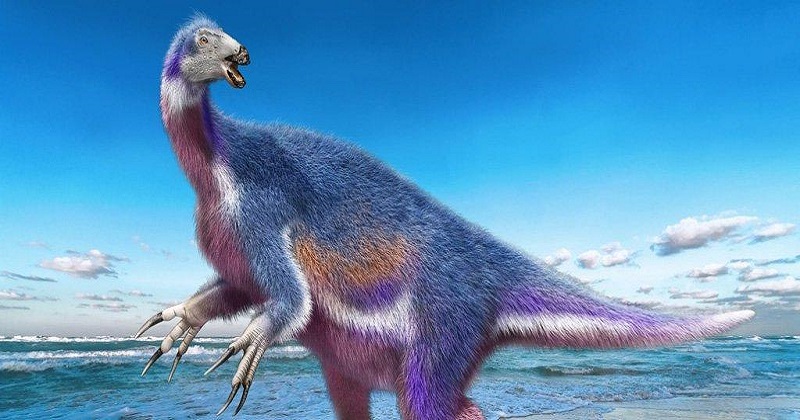
Palaeontologists have discovered a new genus of therizinosaurid dinosaurs that existed in Hokkaido, Japan’s northernmost island, during the Cretaceous era. Between 66 million to 145 million years ago, a new species of dinosaur known as Paralitherizinosaurus japonicus inhabited the Asian coastlines.
According to the research, the most unusual feature of this species was that it had sword-like claws, similar to Edward Scissorhands, which were used to slice grass rather than eviscerate animal prey since it was a herbivore.
This dinosaur was a member of the therizinosaurs, a group of bipedal, herbivorous three-toed dinosaurs that existed during the Cretaceous era. ‘[This dinosaur] used its claws as foraging tools, rather than tools of aggression, to draw shrubs and trees closer to its mouth to eat. We believe it died on land and was washed out to sea’, study co-author Anthony Fiorillo, a research professor in the Roy M. Huffington Department of Earth Sciences at Southern Methodist University (SMU) in Dallas said.
In 2008, researchers from Japan and the United States discovered the fossil. It was the earliest therizinosaur fossil ever discovered in the Asian country. It is also the first to be discovered in Asian sea sediments. The fossil was contained in a concretion, which is a solid mineral deposit.
The hook-shaped fossil is preserved in the collections of the Nakagawa Museum of Natural History in Hokkaido, Japan, and contains a partial vertebra, a partly wrist, and a partial forefoot. It was thought to belong to a therizinosaur at first, but because of a lack of comparable data at the time, the initial researchers were unable to draw any final conclusions, as per the officials of Hokkaido University.
Also Read: Nirmala Sitharaman inaugurates GST museum installed in 400-year-old building in Goa
However, fresh information from a variety of additional fossils discovered since then has aided in the classification of the fossil-based on the morphology of the forefoot claw. This led a fresh group of palaeontologists to examine the specimen again in order to obtain more conclusive answers.
The authors of the current study found, based on their examination, that the fossil, which measures just under 4 inches (10 cm) in length, belonged to a therizinosaur that lived 80 million to 82 million years ago. The findings were published in the journal Scientific Reports on May 3.

Post Your Comments